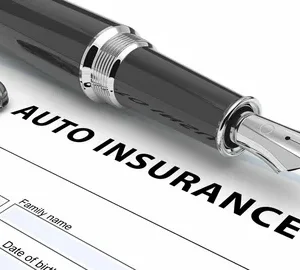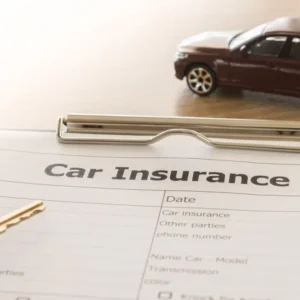Introduction
Embarking on your driving journey is exciting—freedom, independence, and the open road lie ahead. However, for many first-time drivers, one of the most daunting challenges is securing affordable auto insurance. In 2025, insurers are increasingly using data-driven tools, personalized discounts, and digital platforms to differentiate risk—and that can either work for you or against you. This guide distills the essentials: from understanding why your premiums may seem high to uncovering lesser-known discounts and comparing quotes like a pro. By the end, you’ll have actionable strategies to save big on your very first policy.
Understanding Auto Insurance Basics
Before diving into discounts, it’s crucial to grasp the core components of an auto insurance policy:
- Liability Coverage
Covers bodily injury and property damage you cause to others. Required in almost every state. - Collision Coverage
Pays for repairs to your vehicle after an accident, regardless of fault. - Comprehensive Coverage
Protects against non-collision damage, such as theft, vandalism, or natural disasters. - Uninsured/Underinsured Motorist
Shields you if you’re hit by a driver with little or no insurance. - Deductible
The out-of-pocket cost you’ll pay before your insurer covers a claim. - Premium
The recurring cost of maintaining coverage—usually billed monthly or annually.
Understanding these terms sets the stage for savvy decision-making when comparing policies and selecting the right balance of coverage and cost.
Why First-Time Drivers Face Higher Premiums
Insurance companies determine your rate by assessing “risk.” As a first-time driver, you’re statistically more likely to file a claim—especially if you’re under 25—so premiums reflect that. Key factors influencing your rate include:
- Age and Experience
Teen drivers pay on average $366 per month for full coverage, compared to roughly $191 per month for adults with clean records (financebuzz.com). - Credit History
In many states, insurers factor credit scores: a poor credit history can inflate your rate by up to 40%. - Location
Urban zip codes with high theft or accident rates carry higher premiums. - Vehicle Type
Sports cars and luxury models cost more to insure than economy sedans. - Driving Record
Speeding tickets and at-fault accidents can double or triple your premium overnight.
Although these factors feel daunting, targeted discounts and smart shopping can offset initial sticker shock.
Top Discounts for First-Time Drivers
Even as a new driver, you can tap into a wide array of discounts. Start by asking each insurer if they offer:
- Good Student Discount
Maintain a B average (or higher) to save up to 25%. - Safe Driver Discount
No tickets or accidents within a specified period can earn you up to a 20% reduction. - Telematics/“Black Box” Programs
Insurers monitor your driving habits via a mobile app or device; safe driving translates to savings. - Multi-Policy Discounts
Bundling auto with renters or homeowners insurance can trim premiums by 10–25%. - Multi-Vehicle Discount
Insuring multiple cars on the same policy reduces per-vehicle costs. - Pay-In-Full Discount
Paying your annual premium upfront often yields a 5–10% discount. - Low-Mileage Discount
Driving fewer than a threshold—often 7,500–10,000 miles per year—can save you money.
Insurance Navy’s comprehensive guide highlights dozens of discounts and their average savings, ensuring you leave no dollar on the table.
How to Compare Auto Insurance Quotes
Effective comparison shopping goes beyond clicking “Get Quote” once. Follow this step-by-step process:
- Gather Personal and Vehicle Details
Make sure you have your driver’s license, vehicle identification number (VIN), and mileage handy. - Request Quotes from at Least Three Insurers
Include direct writers (e.g., GEICO, Progressive) and local agents. - Standardize Coverage Levels
Compare apples to apples by using identical liability limits, deductibles, and optional coverages. - Use Online Aggregators and Independent Agents
Aggregators speed up preliminary research; independent agents can uncover smaller, regional insurers with competitive rates. - Review the Fine Print
Look out for fees, cancellation policies, and claim-response times.
Comparison Table: Average Annual Premiums for a 20-Year-Old Driver
| Insurer | Full Coverage (Annual) | Minimum Coverage (Annual) |
|---|---|---|
| Allstate | $6,852 | $1,412 |
| American Family | $4,169 | $1,461 |
| Farmers | $7,926 | $2,657 |
| GEICO | $3,635 | $953 |
| Nationwide | $6,195 | $2,242 |
| Progressive | $3,972 | $1,119 |
| State Farm | $4,785 | $1,207 |
| Travelers | $4,058 | $1,156 |
| USAA* | $3,244 | $826 |
*USAA eligibility is limited to military members, veterans, and their families (nerdwallet.com).
This snapshot empowers you to quickly narrow down insurers that cater to young drivers.
Using Telematics and Usage-Based Insurance to Save
Traditional policies rely heavily on demographics and history. Usage-based insurance (UBI) leverages real-time data—speed, braking patterns, mileage—to reward safe driving instantly. Forms of UBI include:
- Pay-As-You-Drive (PAYD)
Premiums fluctuate based on miles driven. - Pay-How-You-Drive (PHYD)
Incorporates behavior metrics such as acceleration and cornering. - Time-of-Day Programs
Penalizes driving during high-risk hours (e.g., late nights).
Insurers like Allstate’s Drivewise® and Progressive’s Snapshot® regularly offer 5–30% discounts for participants who maintain safe driving scores.
Common Auto Insurance Terms Explained
Insurance policies abound with jargon. Here’s a quick glossary:
- Aggregate Limit
The maximum your insurer will pay for a series of claims. - Subrogation
The insurer’s right to pursue reimbursement from an at-fault third party. - Endorsement
A policy modification to add, remove, or alter coverage. - Declarations Page
The summary of your coverage, limits, and premiums. - Umbrella Policy
Additional liability coverage that kicks in when your auto policy limits are exhausted.
Familiarity with these terms helps you avoid surprises during claim time.
Tips to Lower Your Premium
Beyond discounts, consider these proactive strategies:
- Choose a Safe, Economical Vehicle
Compact sedans and hybrids often fall into lower insurance tiers. - Maintain a Clean Driving Record
Even a single at-fault accident can increase premiums by 20–50%. - Improve Your Credit Score
A strong credit history can reduce your rate by up to 15%. - Increase Your Deductible
Raising from $500 to $1,000 could cut your premium by 10–20%. - Pay Annually
Avoid monthly financing fees by paying the full premium upfront. - Review Your Policy Annually
Life changes—new address, improved credit, or additional driver—warrant a fresh quote each year. - Consider Usage-Based Insurance
If you drive infrequently or safely, telematics can yield substantial savings.
Selecting the Right Coverage for Your Situation
Every driver’s needs differ. When choosing coverages, ask yourself:
- What is the Value of My Vehicle?
If repairs exceed 50% of the car’s worth, collision coverage may not be cost-effective. - Am I Comfortable with Higher Deductibles?
Higher deductibles lower premiums but increase out-of-pocket risk. - Do I Need Rental Reimbursement?
Essential if you depend on a car for work and can’t go without wheels during repairs. - Is Roadside Assistance Worth It?
If you lack AAA or similar coverage, having towing and jump-start service can be invaluable.
Tailor your selections to your budget, vehicle value, and risk tolerance.
Conclusion
Securing affordable auto insurance as a first-time driver in 2025 may feel overwhelming, but knowledge is power. By understanding key policy components, harnessing targeted discounts, leveraging usage-based programs, and shopping strategically, you can transform “sticker shock” into “smart choice.” Remember to compare multiple quotes annually, maintain a clean driving record, and revisit your coverage needs as your life evolves. With these strategies, you’ll not only save on your very first policy but also establish the groundwork for increasingly affordable premiums throughout your driving future. Safe travels!






